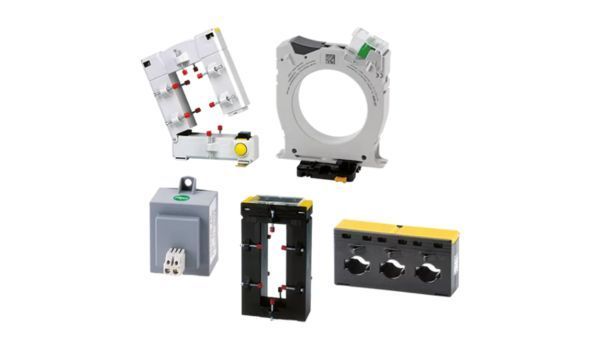How to select an electric energy meter?
Explore our infographic for a quick overview, then dive into the details below for an in-depth explanation of each criterion.
When selecting an energy meter, it is important to take into account several factors to ensure that the selected meter is suitable for your needs:
- Network Type: Depending on your installation, the meter must be compatible with either a single-phase or three-phase network. This technical criterion is essential to ensure accurate energy measurement.
- Current (A): The meter’s measurement capacity, expressed in amperes, must match your installation’s load. In addition to checking the nominal current, verify the supported short-circuit current to prevent malfunctions caused by overloads.
- Voltage Type: Your installation’s voltage must be compatible with the meter’s specifications. Ensure you select a model that operates at the required voltage levels to avoid risks of overheating or malfunction.
- Advanced Features and Dual Tariff Option: For users looking to optimize consumption, some meters offer a choice between a single and a dual tariff. This feature enables the distribution of consumption between peak and off-peak hours, offering a chance to reduce energy costs by shifting consumption to lower-cost periods. Ensure your meter includes this option if you wish to take advantage of this flexibility.
- Certifications: If your meter is intended for billing purposes, compliance with the Measuring Instruments Directive (MID) is essential. An MID-certified meter ensures that consumption measurements are certified and can be legally used for billing.
- User Interface: Visualization and configuration options are important for tracking your consumption in real time. Whether for modular installation, back-panel, or door-mounted viewing, choose a model that aligns with your accessibility and display preferences.
What is the difference between single-phase and three-phase meters?
A single-phase meter is an electric energy meter that measures the electrical consumption of one electrical circuit at a time. It is often used to measure electricity consumption in households and small businesses. A single-phase meter consists of a measuring device and a recording mechanism, which records the amount of electrical energy consumed over a given period of time.
In contrast, a three-phase meter measures the electrical consumption of three electrical circuits simultaneously. It is used in industrial and commercial electrical installations, where a large amount of electrical energy is consumed. The three-phase meter consists of three measuring devices and a recording mechanism for each of the electrical circuits. It can measure the voltage and current of each phase, as well as the active and reactive power, allowing for monitoring of the quality of the electrical supply.
In summary, the main difference between a single-phase meter and a three-phase meter is the number of electrical circuits they can measure simultaneously. The single-phase meter measures the consumption of one electrical circuit, while the three-phase meter measures the consumption of three electrical circuits.
What is an MID meter?
The Measuring Instruments Directive (MID) 2004/22/EC is a regulation that applies to the production of measuring instruments, particularly those used for water metering. It establishes performance and marking requirements for meters to harmonize billing rules. Additionally, the MID directive imposes design constraints to ensure the meters are tamper-proof and prevent fraud. Only MID-compliant meters with the CE marking are authorized for billing the consumption of water and energy.
What is a Modbus counter?
A Modbus energy meter is a type of electric energy counter that can communicate with other devices using the Modbus communication protocol. The Modbus protocol is a serial communication protocol that allows devices to communicate with control and monitoring equipment using an RS-485 or Ethernet serial cable.
This type of electric energy counter is capable of measuring electric energy consumption and transmitting this data to other equipment via the Modbus protocol. The transmitted data can include active and reactive energy consumption, voltage, current, frequency, etc.
Modbus energy meters are widely used in electric energy monitoring and control applications, particularly in commercial buildings, factories, power plants, wind turbines, and solar installations. The data collected by Modbus energy meters are often used to optimize energy usage, identify bottlenecks, and reduce energy costs.
What does a direct energy meter mean?
A direct counter is a type of electric energy counter that directly measures the amount of electric energy consumed by a load.
The current transformers (CTs) are integrated into the product and therefore require no accessories. It is sufficient to wire each of the phases downstream of the protection (circuit breaker or fuses) to the counter and then connect the equipment under the counter.
It can be used for three-phase or single-phase power grids, depending on the type of counter chosen. Direct counters can be used to measure the energy consumption of all types of installations: residential, commercial, or industrial.
Optim-Elec offers energy meters for installations from 1 ampere to 100 amperes.
They are equipped with a display to show real-time consumption or to read daily or weekly consumption.
Direct energy meters can be equipped with advanced features for measuring active, reactive, and apparent power, frequency, voltage, etc. It can also be equipped with communication modules to allow remote meter reading and data analysis.
Download our comparison chart and don't hesitate to contact us for personalized advice on selecting the best meter for your needs. Our team is here to help you make the right choice!







